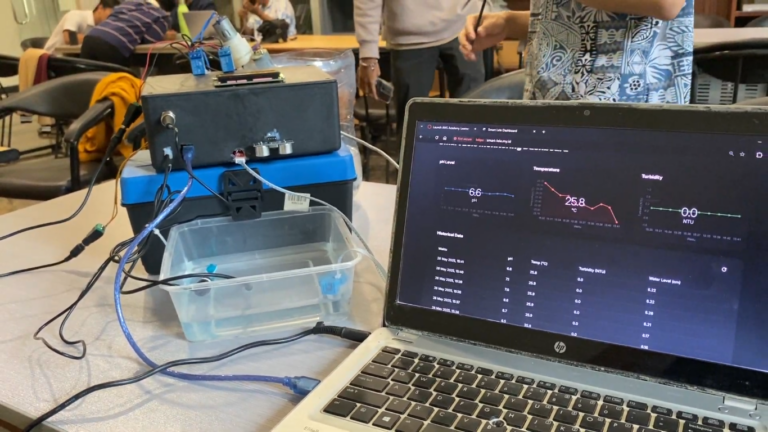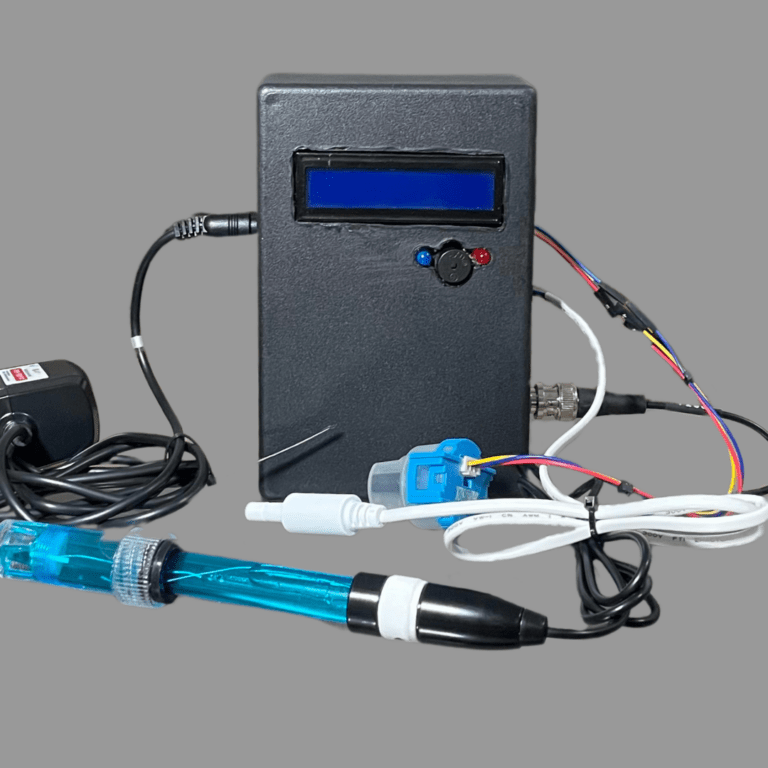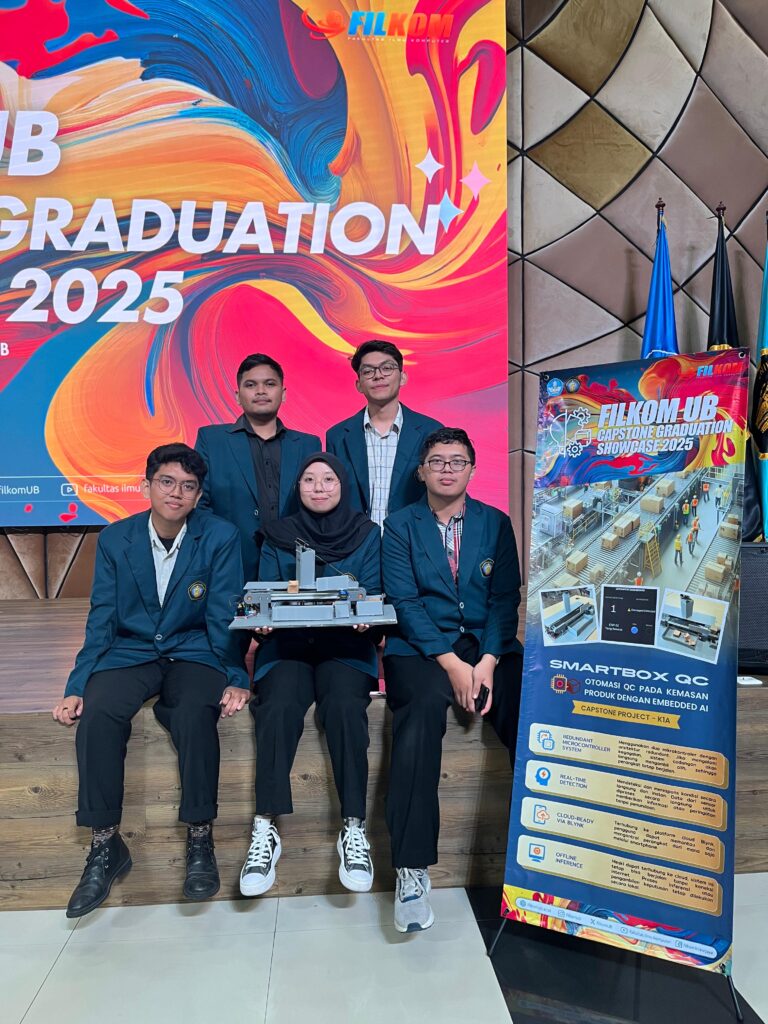🐾 Project Name
Sistem Deteksi Dini Kebakaran Hutan dengan Kamera ESP32 dan Mekanisme Respons Otomatis
🌐 Project Domain
This project falls under Artificial Intelligence of Things (AIoT) and environmental monitoring, focusing on developing an integrated technological solution for real-time forest fire detection and automatic response using ESP32-CAM cameras and machine learning algorithms.
🧑🤝🧑 Meet Our Team

❗ Problem Statements
🕒 Forest fires in Indonesia have become an increasingly urgent problem, with 58 incidents recorded in 2025, damaging 125.89 hectares of land.
🐶 These fires cause ecosystem damage, air quality degradation, and health threats to surrounding communities due to smoke.
🌍 The increasing frequency of fires necessitates a more effective and responsive detection system to minimize negative impacts.
🎯 Goals
🍽️ To develop an effective and real-time forest fire detection system using ESP32 cameras and machine learning algorithms.
📉 To analyze environmental factors affecting the accuracy of forest fire detection.
📲 To integrate an efficient automatic response mechanism with the detection system to minimize the impact of forest fires.
💡 To identify and overcome challenges in implementing the early detection system in the field.
🔁 To evaluate the system’s contribution to forest fire mitigation efforts in Indonesia.
💡 Solution Statements
⚖️ Utilizing ESP32-CAM cameras as the main component to capture periodic forest images.
⏱️ Analyzing captured images using a Convolutional Neural Network (CNN) model to detect signs of fire or smoke.
📡 Automatically activating a water sprinkler mechanism and sending notifications to users via a web dashboard when a potential fire is detected.
🔁 Processing and storing collected data for further analysis, allowing for future system evaluation and improvement.
📺 Employing local processing on the ESP32 for efficient operation even with limited connectivity.
🔔 Integrating IoT and machine learning technologies for early detection and rapid mitigation actions.
🧰 Prerequisites – Component Preparation
🧠 ESP32: Dual-core microcontroller with Wi-Fi and Bluetooth capabilities, up to 240 MHz.
📸 ESP32-CAM: Integrates ESP32 with an OV2640 camera (up to 2MP resolution) for image and video capture.
🔔 Active Buzzer: Produces sound with DC voltage, used as an alarm indicator.
🔄 Relay: Electromagnetic switch to control large electrical currents with small currents, used for the water pump.
💧 HC-SR04 Ultrasonic Sensor: Measures distance by emitting ultrasonic waves, used for water level detection.
⚡ Step-Down Converter (5A): Buck converter to lower voltage from a 7V battery to 5V or 3.3V for the microcontroller.
🔋 Battery (7Volt): Provides DC power to the entire system, typically Li-ion or Li-Po for high capacity.
💻 Convolutional Neural Network (CNN): Machine learning architecture for image processing and pattern recognition, used for fire detection.
☁️ Amazon Web Services (AWS): Cloud platform providing various computing, storage, and data analysis services, including AWS VPC, AWS RDS (MySQL), and AWS EC2.
🌐 Next.js: An open-source React-based framework for building high-performance web applications (for the web dashboard).
📄 Datasheet
🔗 ESP32 Technical Reference Manual: https://www.espressif.com/

🔗 ESP32-CAM Specifications Table
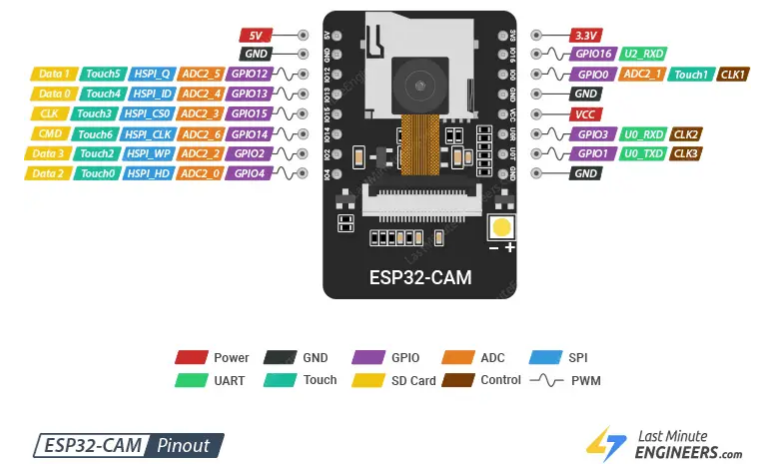
🔗 Kaggle FIRE Dataset: FIRE Dataset
🧩 Schematic

🎬 Demo and Evaluation
🛠️ Setup
This system uses two independent ESP32-CAM units running local CNN algorithms for image classification. A central ESP32 microcontroller receives classification results, makes decisions, and controls actuators and cloud communication. Hardware components include a water pump, ultrasonic sensor, relay module, buzzer, step-down converter, and battery. The firmware is developed using C++ in Arduino IDE, and Edge Impulse is used for the CNN model. AWS VPC handles network and subnet configuration. AWS RDS (MySQL) is used for structured data storage, and AWS EC2 acts as the web server for the dashboard.
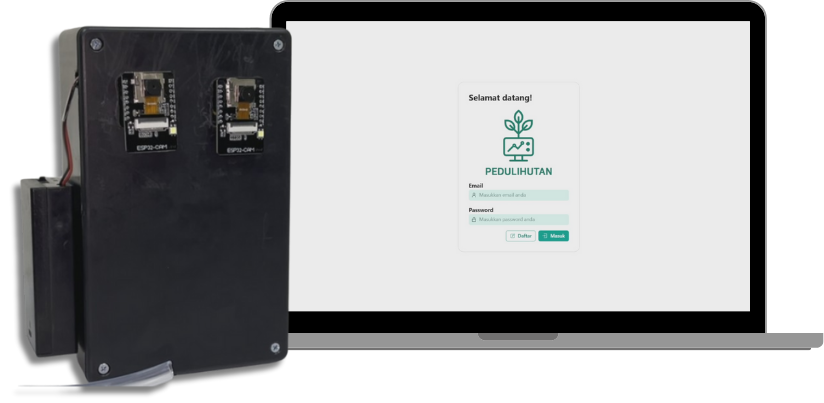
🐕 Demo
The system periodically captures images, processes them with the CNN model, and if fire is detected, activates the buzzer, turns on the water pump, and sends real-time data (classification results, water level status) to the AWS cloud dashboard via WiFi. A 2-second delay verification is implemented to reduce false positives.
Demo Video
🔬 Evaluation
Functional testing confirmed stable operation and execution of the programmed logic. Key strengths include the 2-second delay verification for false positive reduction, redundancy with two ESP32-CAM units, stable hardware integration, and real-time data transmission to AWS. Challenges include suboptimal CNN accuracy potentially leading to false positives and dependence on WiFi quality for cloud data transmission. Future improvements include enhancing detection accuracy with better training datasets, considering Raspberry Pi for improved processing, and upgrading camera quality.
✅ Conclusion
This project successfully developed an early forest fire detection system with ESP32 cameras and automatic response mechanisms. It effectively integrates image processing, automatic water pump and buzzer activation, and cloud monitoring. The project demonstrates the feasibility of a low-cost yet effective solution for small-scale forest fire detection and mitigation, significantly contributing to early prevention efforts.
📲 Contact Us!
Tengku Muhammad Fadlan Praditya | LinkedIn
Repositories:
